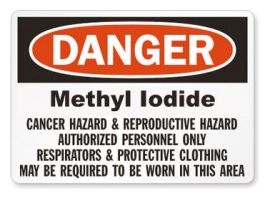
© Delicious Truth
Basic science was ignored when California approved the use of methyl iodide, a cancer-causing pesticide,
said scientist John Friones at an environmental safety hearing last week.
California berry growers are hoping to use methyl iodide, a registered carcinogen, to kill weeds and eliminate soil disease in their fields. It was developed as a replacement for another chemical that had a damaging effect on ozone levels. Activists, however, have fought methyl iodide for years, pointing to its danger for farmworkers and the general public.
In 2007, fifty-four scientists, including Nobel prize winners,
famously intervened as the EPA prepared to approve the chemical, calling methyl iodide one of the most toxic chemicals used in industry.
To investigate concerns, the California Department of Pesticide Regulation (DPR) convened an independent Scientific Review Committee, headed by Dr. Friones and others. The results of the investigation were clear: "any anticipated scenario for the agricultural ... use of this agent would ... have a significant adverse impact on the public health,"
said the committee's assessment.
The DPR, however, ignored the findings and approved the chemical for commercial use at a level 100 times higher than recommended by the committee. The DPR pointed to risk management strategies that could reduce the chemical's harmfulness.
But trying to reduce one of the Earth's most toxic chemicals through basic risk management strategies is "utopian ... fanciful and even ludicrous," said Dr. Friones in this week's hearing.

Comment: For more information about the importance of detoxing the body for better health and wellness read the following threads on the forum:
Anti-Candida, Inflammation, Heavy Metals Detox and Diet
Detoxification: Heavy Metals, Mercury and how to get rid of them
Detoxify or Die Cookbook